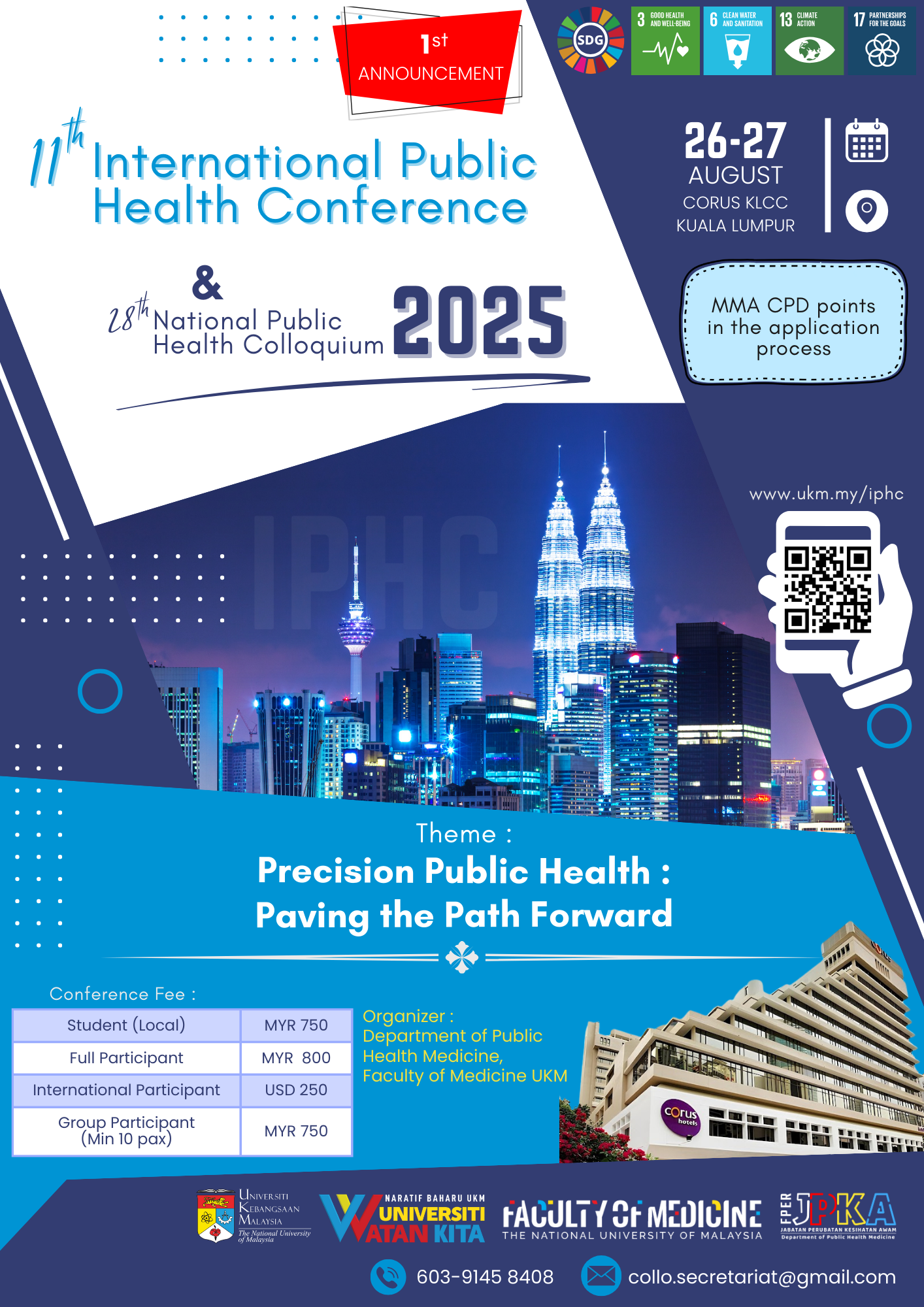Mortality In Children Under 5: Prevalence Of Congenital Malformations And Its Associated Demographic Variables
Abstract
Introduction : Congenital malformations (CM) comprise a wide range of abnormalities of body structure or function that are present at birth and are of prenatal origin. It has contributed to a significant proportion of infant morbidity and mortality. The aims of this study were to determine the extent and investigate the relationship between CM and its associated demographic variables.
Method: Data was extracted from Ministry of Health (MOH) database compiled from the reports on Stillbirth & Under 5 Mortality from year 2013 to 2014.
Results : Out of 9,827 child death, 2,840 (28.9%) were classified under CM as defined under ICD-10 classification. Majority of those with CMs died at neonatal stage (62.7%) and among mothers aged between 20 to 35 years old (67.3%). The mean age of mothers among CM children was 30.8±6.5 years old. Approximately 5.8%, 6.7% and 3.3 % of total CM were neural tube defects, heart defects and hydrops fetalis respectively. The prevalence of CM in males was 15% higher than females. The difference were evident between CM and age of death of children under 5 years old (p<0.001) as well as between CM and maternal age groups (p<0.001).
Conclusion: CM is responsible for 28.9% of total causes of child death with higher occurrence of malformation in males. A significantly higher risk of CMs among mother aged between 20 to 35 years old was observed. This emphasises the importance of raising awareness and the need to strengthen appropriate response for surveillance and prevention program of common CM in Malaysia.
Â
Keywords : Congenital malformations, child death, neonatal, neural tube defects, ICD-10
Â
References
UNICEF definitions. [cited 2014 February 5] . Available at :
http://www.unicef.org/infobycountry/stats_popup1.html
A study on Liu L, et al; Global, regional, and national causes of child mortality: an updated systematic analysis for 2010 with time trends since 2000. Lancet 2012; 379: 2151–61.
Danzhen You, Jin Rou New, Tessa Wardlaw, Level and Trends in Child Mortality, UNICEF 2012.
World Health Organization. World health statistics 2012. Geneva: WHO, 2012.
World Bank. World development report 1993: investing in health. New York: Oxford
University Press, 1993.
World Health Organization (WHO). Congenital anomalies. [cited 2016 February 5] . Available at : http://www.who.int/topics/congenital_anomalies/en/
Tootoonchi P. Easily identifiable congenital anomalies: prevalence and risk factors. Acta Medica Iranica 2003; 41(1): 15-19.
Wong SweeLan, Hussain Imam Muhammad Ismail Under Five Death in Malaysia in the year 2006, Kuala Lumpur 2008.
International Classification of Diseases (ICD). World Health Organization
Mohanty C, Mishra OP, Das BK, Bhatia BD, Singh G. Congenital malformations in
newborns: A study of 10,874 consecutive births. J Anat Soc India. 1989; 38:101–11.
Chaturvedi P, Banerjee KS. Spectrum of congenital malformations in the newborns
from rural Maharashtra. Indian J Pediatr. 1989; 56:501–7.
Wang D, Shi Y, Donald S, Chang C, Li C. Factors associated with the utilization and
quality of prenatal care in western rural regions of China. Health Educ. 2012; 112(1):
-14.
Hollier LM, Leveno KJ, Kelly MA, McIntire DD, et al. Maternal age and malformations in singleton births. Obstet. Gynecol.2000; 96:701-706.
Grag A, Canolly C, Hollier LM: Maternal age and malformations in singleton births.
J Obstet Gynecol 2000; 96:701–6.
Yoon P, Freeman S, Sherman L, Taft LF, Gu Y, Pettay D, et al. Advanced maternal age and the risk of Down syndrome, characterized by the meiotic stage of chromosomal
error. a population based study. Am J Hum Genet 1991; 58(3): 628-33.
Hassold T, Hunt P. To err (meiotically) is human: the genesis of human aneuploidy. Nat
Rev Genet 2001; 2: 280-91.
Dutta V, Chaturvedi P. Congenital malformations in rural Maharashtra. Indian Pediatr. 2000; 37:998–1001.
Cleves MA, Hobbs CA, Zhao W et al. Association between selected folate pathway polymorphisms and nonsyndromic limb reduction defects: A case-parental analysis. Paediat & Perinatal Epidemiol 2011; 25:125–134.
Downloads
Additional Files
Published
How to Cite
Issue
Section
License
IJPHR applies the Creative Commons Attribution (CC BY) license to articles and other works we publish. If you submit your paper for publication by IJPHR, you agree to have the CC BY license applied to your work. Under this Open Access license, you as the author agree that anyone can reuse your article in whole or part for any purpose, for free, even for commercial purposes. Anyone may copy, distribute, or reuse the content as long as the author and original source are properly cited. This facilitates freedom in re-use and also ensures that IJPHR content can be mined without barriers for the needs of research.






